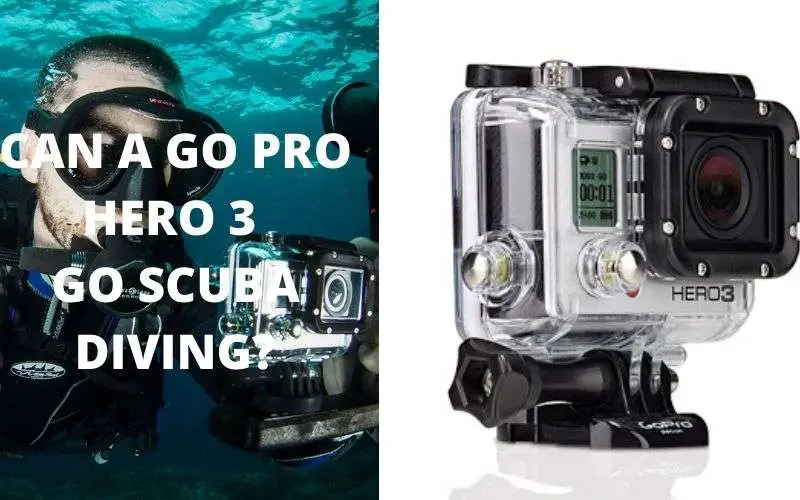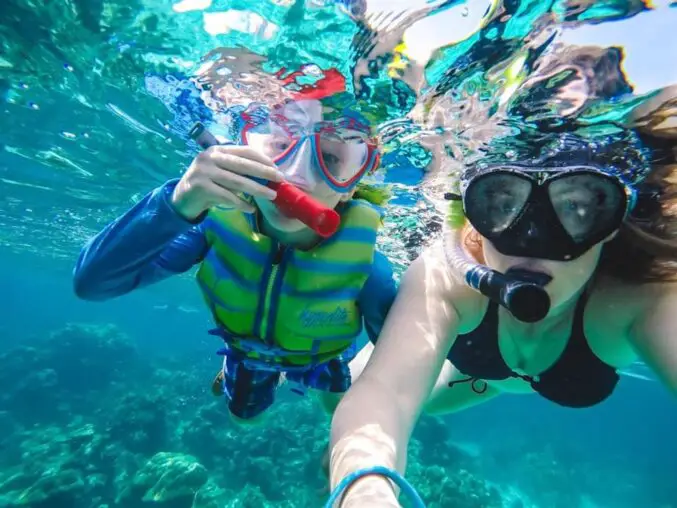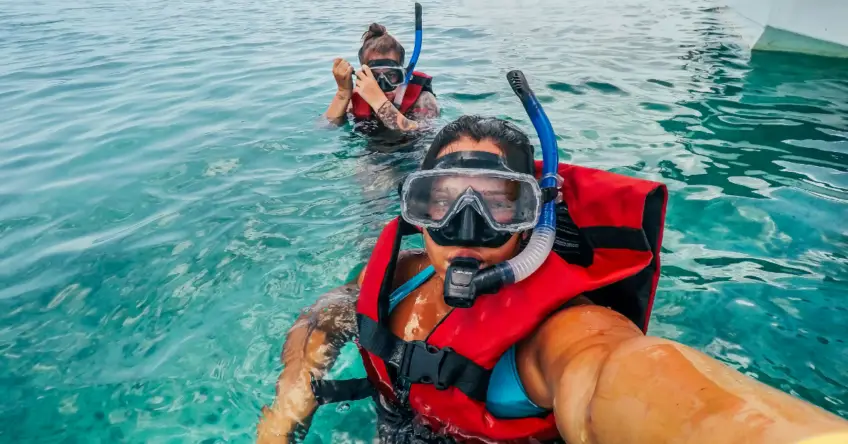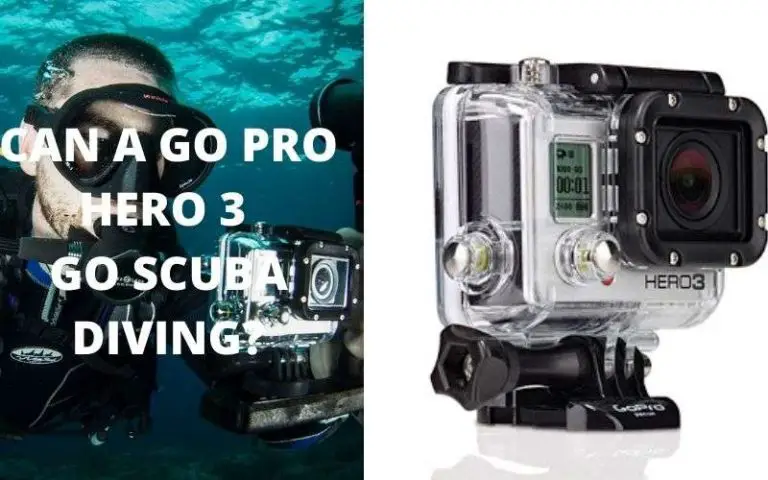
The allure of exploring the underwater world while snorkeling often beckons adventurers to venture out alone.
The freedom to move at your own pace, savor moments of solitude, and choose your underwater path can be enticing. However, beneath the surface, the ocean hides unpredictable conditions that raise the crucial question: Is it truly safe to snorkel alone? While solo snorkeling can be an exhilarating experience, it is not without its inherent dangers.
This article delves into the risks and rewards of solo snorkeling, offering strategies to mitigate potential hazards. Although these precautions can enhance safety, the unequivocally safest and most enjoyable choice remains snorkeling with at least one companion.
The Intricacies of Snorkeling Alone
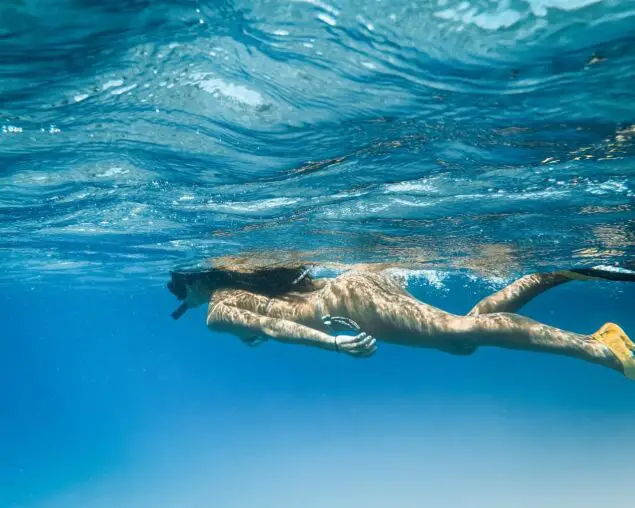
Snorkeling, akin to scuba diving, is a recreational pursuit that allows individuals to explore the wonders of the ocean with specialized breathing equipment. Despite their similarities, snorkeling enjoys a significantly lower entry barrier. Unlike scuba diving, snorkelers do not require extensive training and certification, making it accessible to a broader audience.
Nevertheless, snorkeling, like any water-based activity, is not devoid of risks. Safety concerns extend beyond the realms of equipment and techniques, especially for solo snorkelers.
Muscle Cramps
A seemingly innocuous muscle cramp can turn perilous when snorkeling alone. While minor cramps may not pose a substantial issue for experienced swimmers wearing flotation devices, they can be alarming for non-swimmers, leading to panic, water ingestion, and potential drowning. Cramps lasting up to ten minutes can paralyze affected muscles, leaving the individual vulnerable.
Medical Conditions
Unlike scuba diving, snorkeling lacks mandatory medical evaluations, making self-awareness crucial. Individuals with undisclosed medical conditions may be at risk, as sudden emergencies in the water can lead to dire consequences. From loss of consciousness to asthma attacks, the ocean can be merciless when medical help is out of reach.
Currents and Waves
Changing currents and waves can transform a tranquil snorkeling session into a perilous escapade. Unnoticed shifts in water flow may carry snorkelers far from their entry point, increasing the distance to safety. Rip currents, in particular, pose a grave danger, as exhausted solo snorkelers without flotation devices may struggle to return to shore.
Low Visibility
Solo snorkelers may inadvertently drift too far from shore, complicating rescue efforts. While brightly colored equipment enhances visibility, it is still less effective when there is no companion to act as an extra set of eyes. High boat traffic areas can exacerbate the issue, making it harder for boaters to spot solo snorkelers in distress.
Duck Diving Dangers
Duck diving, a thrilling maneuver employed by advanced snorkelers to descend closer to underwater marvels, is fraught with risks when done alone. Hyperventilation before a dive can lead to shallow water blackout, a perilous condition where individuals continue to descend without realizing their oxygen depletion. Only a vigilant buddy can intervene during such a crisis.
Marine Life Encounters
Even when solo snorkeling, encounters with marine life can result in injuries from stings, cuts, or other mishaps. While having a group might deter larger creatures, a lone snorkeler facing an injury must navigate the treacherous path back to safety while contending with exhaustion, shock, or loss of blood.
Shark Presence
Although shark attacks are statistically rare, solo snorkelers might attract the curiosity of these predators. Panic-induced flailing could potentially provoke an otherwise non-threatening encounter. Regardless of the statistical improbability, snorkeling in waters known for shark activity remains ill-advised.
The Advantage of Companionship
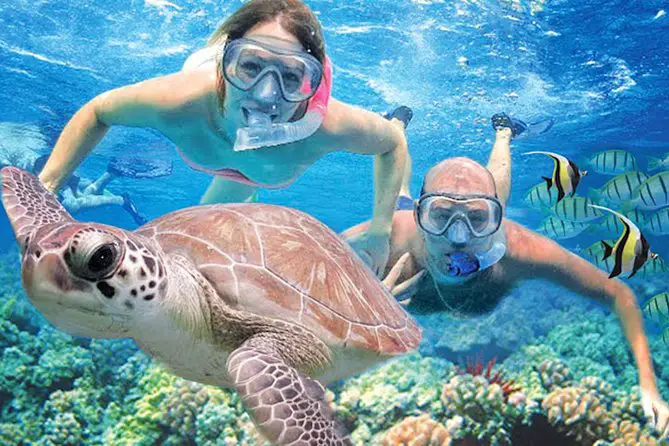
While solo snorkeling may be a tempting proposition, it often pales in comparison to the safety and enjoyment of snorkeling with a companion. With a partner, snorkelers forge unforgettable memories, bolstering confidence and diminishing fear. The presence of a buddy lends convenience, as assistance is always at hand.
Moreover, a snorkeling partner can offer valuable guidance and introduce snorkelers to new, uncharted spots. Two sets of eyes enhance safety by swiftly spotting potential dangers and exciting underwater sights.
Safe Solo Snorkeling: Is It Possible?
Although solo snorkeling is feasible under specific circumstances, true isolation should be approached with extreme caution. Essential criteria for safe solo snorkeling include:
- Sheltered Areas: Opt for bays or lagoons with minimal currents and tides.
- Shallow Water: Stay in areas with shallow depths.
- Low Boat Traffic: Choose locations with limited boat activity.
- Nearby Help: Ensure that there are people onshore who can provide assistance if needed.
- Easy Exit: Remain close to the shoreline for quick access to safety.
Prior to solo snorkeling, conduct a thorough mental assessment of potential problems and solutions. Analyze water conditions, weather reports, and local advice. If possible, first explore the area with a buddy to familiarize yourself with its challenges before venturing out alone.
Strategies for Safe Solo Snorkeling
For those determined to embark on a solo snorkeling adventure, adhering to these practical tips can enhance safety:
- Rest Well: Ensure you are well-rested and healthy before snorkeling.
- Tides and Currents: Stay away from locations prone to strong tides or currents.
- Rip-Tide Awareness: Educate yourself about rip tides and avoid areas where they are prevalent.
- Weather Check: Review local weather reports to monitor changing conditions.
- Notify Someone: Inform a friend or family member of your solo snorkeling plans, including your expected return time.
- Hydrate and Stretch: Drink fluids and perform stretches before snorkeling to prevent cramps.
- Gear Inspection: Thoroughly inspect your snorkeling equipment before entering the water.
- Bright and Visible: Invest in brightly colored gear for increased visibility.
- Flotation Device: Wear a personal flotation device, such as a life jacket for beginners or a snorkel vest for more experienced snorkelers.
- Surface Marker Buoy: Tow a surface marker buoy (SMB) to signal your presence.
- Carry a Whistle: Have a whistle handy to call for help if necessary.
- Waterproof Phone: Consider a waterproof phone case for communication and documentation.
- Caution and Limits: Maintain a conservative approach, adhering to your limits and avoiding unnecessary risks.
- Avoid Duck Diving Alone: Refrain from duck diving alone to mitigate the risk of shallow water blackout.
Conclusion
Solo snorkeling, while possible, remains an endeavor laden with potential risks. Although precautions can reduce these dangers, they cannot be completely eradicated. Snorkeling with a companion or a group offers unparalleled safety and the joy of shared experiences.
Ultimately, snorkelers must recognize that the ocean is a dynamic and unpredictable environment. No level of preparation can replace the security of having a trusted buddy by your side. When it comes to snorkeling, safety should always take precedence over solo exploration.




